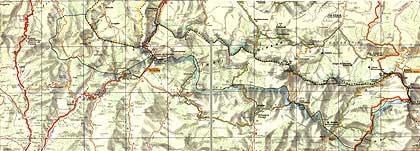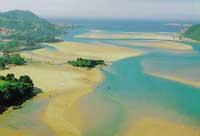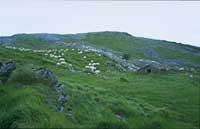Management of protected natural spaces and agricultural activities
1997/10/01 Bengoa Ansa, Aitor Iturria: Elhuyar aldizkaria
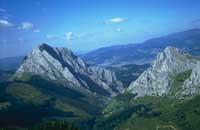
Since the Neolithic, when man became a farmer and farmer, his environment has been transforming. Today, almost the entire landscape of Euskal Herria, if not all, is the result of various activities carried out by man.
At one time, faced with innovations in the evolution of agriculture and livestock, farmers and nature could suffer and balance changes.
However, most of the innovations and transformations that occur today go much faster and we do not have time, technology or wisdom to integrate them into our environment and measure and assess their consequences. As a result, several intensive farms have caused environmental damage.
The paradox is that many of the landscapes and ecosystems that we want to protect and conserve today are the fruit of the agricultural practices of many years and, urgently, they can be enemies of poorly oriented farms.
Creation of protected natural spaces
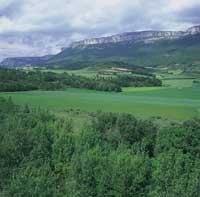
The decisions of protection and management of natural spaces are relatively new in the Basque Country. These natural spaces were created with the aim of conserving the environment and at the same time guaranteeing the socio-economic development of its inhabitants, favoring the usual agricultural practices.
The different Basque administrations have followed different criteria when it comes to protecting natural spaces.
On the one hand, in the Autonomous Community of the Basque Country the model of Natural Parks has been used, protecting wide spaces. This has meant combining conservation and economic development. On the other hand, in Navarre they have been protected above all small surface lands. In this case, economic criteria have been ruled out and protection of certain ecosystems, geological curiosities or species has been enhanced. And finally, in Iparralde, for the moment, a legally protected natural space has not been created.
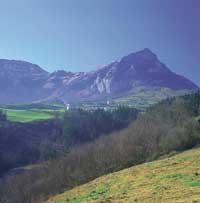
The pioneer was the Urdaibai Biosphere Reserve, declared in 1989 following the model of the UNESCO MAB program. The main objective was to keep in good condition the ecosystem and health of the usual human activities.
In 1989, when Spain passed Law 4/1989 on the Conservation of Protected Areas and Wild Animals and Plants, new legal instruments were created for the protection of natural spaces. The most remarkable novelty of this law was the creation of the Natural Resources Management Plan (PORN). The elaboration of this PORN is mandatory and a priority against any other territorial planning plan before legally protecting any environment. This Plan includes, among others, the physical limits of the protected area, its state of conservation, the regulations of activities, the conservation criteria, etc. However, the main task of PORN is the territorial division or zoning of the medium that is intended to protect. That is, in a natural space there will be areas with different levels of protection and in that territorial division the measures taken in each specific area will be based.
The designation and management of these natural spaces has fallen to the regional administrations, with the exception of the National Parks.
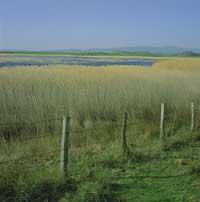
Since then, the Autonomous Community of the Basque Country has promoted the creation of Natural Parks; Urkiola (1989), Valderejo (1992), Gorbeia (1994), Aralar (1994) and Aiako Harria (1995).
In order to expand, define and adapt Law 4/1989 to our territory, on 30 June 1994, the Parliament of Vitoria-Gasteiz approved Law 16/1994 on Nature Conservation. The object of this law is the conservation of the ecosystem, vegetation and fauna, through the orderly use of natural resources. As far as protected natural spaces are concerned, in the shadow of this Law various novelties have been incorporated. Three levels of protection are established: Natural Parks, Biotopes and Singular Trees.
The aforementioned PORN must be formulated prior to the protection of the natural space and, within one year of its declaration, a Master Plan for Use and Management (PRUG) will be developed. This Plan defines authorized and prohibited activities in the protected environment. It also sets its regulations and protection criteria.
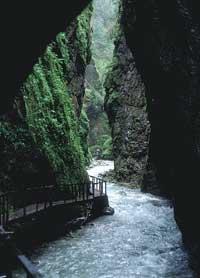
The declaration of Protected Natural Areas is the responsibility of the Basque Government and its management corresponds to the corresponding Provincial Council.
Currently there are in the CAPV the five Natural Parks cited under this law, four Biotopes (Itxina, Biasteri, Leitzaran and Inurritxa) and 25 Singular Trees.
To know the history of the protected spaces in Navarra we have to go back to the year 1976, year in which some of the competences of ICONA of the time were transferred to the Provincial Council of Navarra. Subsequently, the Arbaiun Canyon (1976) and Lake Pitillas (1977), based on the Hunting Legislation, were declared as biological reserves. In 1984 Bertiz Park was declared a Natural Park. In the years 1986-87, with the constitution of the specific legislation that allowed the territorial planning of Navarre, new models or protection figures emerged: Integral Reserve, Nature Reserve, Natural Enclave and Natural Environment of Leisure. Since then in Navarra we have three integral reserves (Lizardoia, Ukardi and Aztaparreta), 38 natural reserves, 26 natural enclaves and two natural areas of recreation.
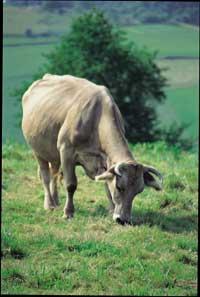
Last year, Law 9/1996 of Natural Spaces of Navarre was passed and all the legislation and regulations existing in Navarre were integrated around protected areas and all the confusion was clarified. The first harvest of this new law has been the Urbasa-Andia Natural Park (February 1997).
Complicated management
It is known that, in general, the economic situation of the primary sector is not as good as we would like and has all kinds of problems. At a time when many innovations are taking place, it is necessary to set well what kind of agriculture model we want to promote. To this end, the Strategic Plans for Rural Areas and balanced development projects are developed.
However, any action that develops in the field of protected natural spaces has its specific regulations, collected in the aforementioned PRUG. Since the conservation of nature has a great political, economic, sociological impact, etc., when preparing the PRUG, participates everyone who has something to say in each of the farmers, ranchers, foresters, mountaineers, administrations, universities and environment, forming a patronage. However, it is not easy to prepare projects that everyone likes, and discussions and debates often arise.
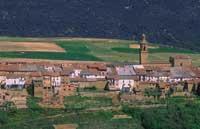
It is clear that the economic viability of agricultural activities is not enough and that ecologically profitable models of exploitation must be promoted. But how is ecological profitability measured? How should this "ecologically" rich farmer compete in a market that seeks to obtain the highest sources of short-term income? And when it comes to valuing some things we use good adjectives, but it is also time to measure them in numbers and money.
Clearing systems emerged with the aim of solving problems that a farmer, farmer or forestry loses money for causing less environmental damage. These types of projects are also found in the European Regulations and in the management models of the Natural Parks. However, the opinion on the functioning of these systems will be very different if you consult the administration or a farmer.
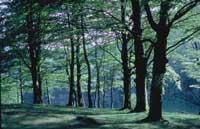
In any case, from the moment farmers actively participate in the conservation of nature, work is being done for humanity and, therefore, it is logical that farmers receive pocket money.
Baserritarras have been the protagonists of the spaces protected in the present, for good and for bad. But today tourism is increasingly important in protected environments, so each of us has more and more responsibility in its management.

Gai honi buruzko eduki gehiago
Elhuyarrek garatutako teknologia



